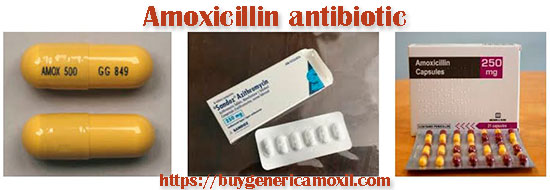Development of the drug (Amoxicillin antibiotic) was completed in 1972 by the pharmaceutical company Beecham, and its sales were already started by Beecham’s successor, GlaxoSmithKline. Initially, the drug was called Amoxil, since it was issued a corresponding patent with a registered trade name. Currently, since the patent has expired, other pharmaceutical corporations that sell amoxicillin under other names have received the right to produce its analogues.
Properties of amoxicillin antibiotic
It belongs to the penicillin class of drugs. The composition of amoxicillin is organic compounds, the core of which forms 6-aminopenicillanic acid, obtained from Penicillium chrysogenum.
The advantages of amoxicillin over similar drugs, such as ampicillin and benzylpenicillin, is that the amoxicillin molecule contains the hydroxyl group OH. Thanks to it, the drug is rapidly absorbed into the blood, respectively, a high concentration of amoxicillin is achieved in a shorter period of time. In turn, this fact allows you to prescribe amoxicillin tablets to patients with acute viral or bacterial infections instead of, for example, ampicillin injections, which greatly facilitates taking the medicine and saves money.
Another advantage of amoxicillin is that it is resistant to the effects of gastric juice. This property of the drug allows pharmaceutical companies to produce forms of the drug for oral use.
Pharmacodynamics Amoxil
Amoxicillin is a broad-spectrum drug, acid-resistant, bactericidal and antibacterial, from the class of semi-synthetic penicillins.
It affects the synthesis of peptidoglycan (a substance found in the cell walls of bacteria) and disrupts it during the reproduction of bacteria and their growth, promotes bacterial lysis and inhibits transpeptidase. It is active against the following harmful microorganisms:
- staphylococci
- streptococcus
- the causative agents of meningitis, gonorrhoea and salmonellosis
Viruses and bacteria that can produce penicillinase are immune to the medicinal components of amoxicillin. The drug begins to perform useful work thirty minutes after taking it and works for eight hours.
Amoxil Pharmacokinetics
Absorption of amoxicillin into the blood occurs quickly, the absorption of the drug reaches 93%, while no effect on absorption depending on the presence or absence of food in the stomach was found. Acidic gastric juice does not destroy the active components of the drug. The maximum concentration in the patient’s blood after taking the tablets is detected in two hours.
The drug is distributed within the body through organs, tissues and fluids, for example, it is found in blood plasma, urine, sputum, lung tissue, genitals, adipose tissue, bones, spinal fluid, gall bladder, intestinal mucosa and pleural fluid.
Increasing the dose of the drug increases its concentration in the human body. If you take 3 tablets at once instead of 1, then the concentration will increase by 3 times. The antibiotic overcomes the blood-brain barrier with difficulty.
Amoxicillin is metabolized to form inactive metabolic products. The body completely removes the drug within three hours after taking it. The kidneys are involved in the elimination of the drug, processing about 2/3 of the components of amoxicillin, up to 20% is metabolized and excreted by the liver. In small doses, it is found in breast milk. If the patient has impaired kidney function, the complete elimination of amoxicillin may take up to 16-17 hours, and hemodialysis may be required.
Form of release of amoxicillin
Currently, manufacturers produce the medicine in the following forms:
- Tablets.
- Capsules.
- Suspensions.
- Solution for oral administration.
- Dry substance used for injection.
Contraindications Amoxicillin antibiotic
Taking amoxicillin is strictly prohibited in two cases:excessive sensitivity of a person to any components of the drug or in case of infectious mononucleosis.

With special precautions, amoxicillin should be used in patients who have a predisposition to allergies. Individuals who are overly sensitive to amoxicillin should take into account that when using cephalosporin antibiotics together with the antibiotic we are considering, cross-allergic reactions may occur.
Before prescribing this medicine, pregnant women should keep in mind that taking the drug may cause damage to the baby. Therefore, you need to weigh the expected benefits of treatment for the expectant mother and possible harm to the fetus.
Newborns and young children should not be fed breast milk during treatment, since amoxicillin penetrates it and can cause undesirable side effects in the child, such as allergies.